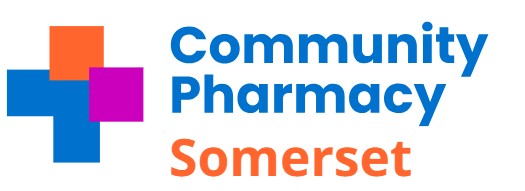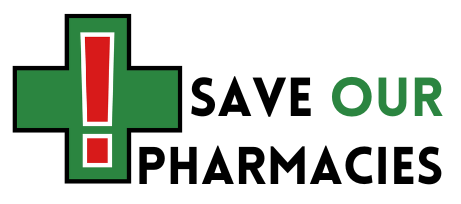Quality Payments – Patient safety report
Community pharmacy contractors passing the gateway criteria will receive a Quality Payment if they meet one or more of the quality criteria. The Department of Health has weighted these based on an assessment of the difficulty of achieving them and the benefit to patients for doing so, with each criterion being designated a number of points.
One of the quality criteria is:
‘Written safety report at premises level available for inspection at review point, covering analysis of incidents and incident patterns (taken from an ongoing log), evidence of sharing learning locally and nationally, and actions taken in response to national patient safety alerts.’
NHS England guidance
NHS England has issued guidance on the gateway criteria. Contractors are strongly encouraged to read this guidance document, as well as NHS England’s guidance on the quality criteria, to ensure they are fully briefed on the Quality Payments Scheme.
Click on a heading below for more information.
Quality criterion points and value
The value of this quality criterion is as follows:
| Number of review points at which it can be claimed | One |
| Points at any one review point | 20 |
| Total points over the two review points | 20 |
| Value of total points | £1,280 |
Aim/rationale of this quality criterion
The aim of this criterion is to foster a culture of learning and continuous improvement in every pharmacy with regard to patient safety. It is based on the following principles that have been developed in collaboration with community pharmacy Medication Safety Officers (MSOs) and stakeholders, to support the production of the written patient safety report. These are complementary to the principles of incident reporting which can be found on the Pharmacy Voice website.
- Incidents to be considered in the report should include errors or near misses that involve medication that have caused patient harm or had the potential to do so. Errors picked up early in the dispensing process or documentation errors would therefore not be included.
- The aim of a pharmacy written patient-safety report is to recognise and support development of a safety culture. In particular, the report should demonstrate continuous improvement through reviewing and reflecting on errors.
- Where errors occur, a proportional response to changes and safety measures should be taken. Contractors should take care that in focusing on one area for improvement, they are not neglecting others.
- Where human intervention is involved, the potential for error exists. Using systems and processes to support staff to make the correct decision or take the right action improves safety. Care should be taken in developing these processes so that they are user friendly, otherwise they risk not being followed correctly, increasing the risk of error.
- The best barriers to error are the simplest and often rely on physical measures.
Error occurs when a complex set of circumstances converge and make it possible. Understanding the relationships between circumstances requires the gathering of information, followed by analysis and reflection. This is why it is important that contractors review errors and share their learning.
Since 2005, community pharmacies have been required to record patient safety incidents in an incident log and report these to the National Reporting and Learning Service (NRLS).
How to achieve this quality criterion
The written safety report should be specific to each individual pharmacy and should be a summary that reflects the events taking place in that pharmacy. Contractors are encouraged to work with other pharmacies to share their learning.
In order to meet this quality criterion, contractors should:
- collate incidents and near misses from an ongoing log;
- analyse these and look for patterns;
- reflect on the learning from these;
- take actions to minimise future risk from repeated errors; and
- share their learning (both locally and nationally).
This should then be documented in a written patient safety report. Incidents to be included in the report should include errors or near misses that involve medication that have caused patient harm or had the potential to do so. Errors picked up early in the dispensing process or documentation errors would therefore not be included.
The report must also include evidence of specific actions taken by the pharmacy in response to local errors and national patient safety alerts issued by the Central Alerting System.
You can find out more about Patient Safety Alerts on the NHS England and NHS Improvement websites.
Template reports
PSNC, the Pharmacy Voice Patient Safety Group and NHS Improvement have created the below templates, which contractors may choose to use to create their report; these templates are also included in Annex 1 of the NHS England guidance on the quality criteria.
A template to collate and review patient safety incidents each month:
Monthly patient safety report template (Word e-form)
A template to complete the annual written patient safety report:
Annual patient safety report template (Word e-form)
The report does not need to be submitted to NHS England routinely but contractors should ensure that a copy of the report is kept in the pharmacy.
Examples of completed monthly and annual forms can be found below:
Monthly patient safety report example 1 (PDF)
Monthly patient safety report example 2 (PDF)
Annual patient safety report example 1 (PDF)
Annual patient safety report example 2 (PDF)
Sharing learning
There are several different ways that contractors can share learning locally. This might take the form of a meeting with local general practices to share learning from incidents or near misses, sharing learning with other local pharmacies, a Local Pharmaceutical Committee (LPC), Local Professional Network (LPN) or Local Practice Forum (LPF) event, or sharing via a newsletter.
Further support
Further support for individual community pharmacy contractors to meet this quality criterion will be made available via NHS Improvement through the network of community pharmacy MSOs.
The declaration process
Contractors will be required to declare through the NHS BSA online declaration page that they meet this quality criterion.
FAQs
Q. Does completion of the patient safety report replace the need to report patient safety incidents to the National Reporting and Learning System?
No. Reporting patient safety incidents to the National Reporting and Learning Service (NRLS) is a professional responsibility and pharmacy teams should continue to do this.
Q. What duration of time should my pharmacy’s written safety report cover?
While NHS England has not defined a time period, it is expected that the written safety report should cover the previous 12 months if possible. Contractors should have records of incidents, near misses and responses to medicines recalls and national patient safety alerts that would allow contractors to complete an annual patient safety report retrospectively and reflect on learning from these.
Q. Is there a template patient safety report that must be used to meet this quality criterion?
A template patient safety report is available on the Quality Payments – Patient safety report page; however, contractors do not have to use this template to meet this quality criterion. If contractors choose to create their own report, they should ensure it includes all the information required by NHS England. Details on the requirements can be found on the Quality Payments – Patient safety report page.
Q. Does the written patient safety report need to be submitted to NHS England?
No. The report does not need to be submitted routinely to NHS England but contractors should ensure that a copy of the report is kept in the pharmacy.
Q. The quality payment criterion states that a ‘written’ safety report at premises level needs to be available for inspection; does this need to be handwritten or can it be computer generated (typed)?
The report can be either hand written or computer generated (typed).
More frequently asked questions (FAQs) on Quality Payments can be found on the Quality Payments – FAQs page of the PSNC website.



